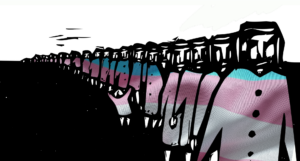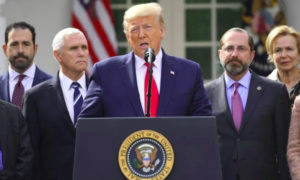|
To see long excerpts from “The Professor of Truth” at Google Books, click here.
|
“The Professor of Truth”
A book by James Robertson
“The Professor of Truth,” a novel by James Robertson, is set 21 years after a plane carrying English lecturer Alan Tealing’s wife and daughter exploded over Scotland, killing them and everyone else on board. Tealing’s grief manifests in his obsessive efforts to prove that the man convicted of the crime was not actually the man responsible. Tealing’s inability to move past the tragedy, as friends and family have long urged him to do, has left him isolated and emotionally crippled. And then, one snowy night, Nilsen, a retired American intelligence officer, arrives at Tealing’s door, claiming to have new information about a man named Parroulet, a key witness at the trial — information that will confirm Tealing’s belief that an innocent man was convicted, and Tealing cannot help but follow the clues leading, he hopes, to the truth at last.
The novel is written in two parts: “Ice” and “Fire.” One cannot help but think of Robert Frost’s two ways the world might end.
In the first part, “Ice,” Tealing is frozen in a glacier of grief. Rarely have I read prose more evocative than this passage, for example, when Tealing visits the crash site shortly after the event:
I pushed on a few hundred yards, then stopped to get my breath back. How carelessly we use such phrases. To get my breath back! I looked up again. It was still early afternoon, but the light was poor and the sky loomed with dull menace. It was impossible not to think of those terrible things happening above the clouds, not to see a plane full of people breaking into many pieces. I stared, searching for the first drops of human rain. I thought of the two minutes of falling, that long, brief, breathless tumble, as of parachutists without chutes, the blacking-out, the faint, feeble grapple for consciousness, the agony of cold, the bursting lungs, the rush of the air and the distortion of vision, the stars spinning and mixing with the lights of earth, that infinite, aching two minutes in which your brain is too scrambled to say no, or call for help, or reach for the child who so recently, so long ago, was beside you, or say goodbye to the man who loved you. I stood staring to heaven and nothing came from there, no mercy or redemption. Whatever had come had come already and it was not sent by God. I stood, arms outstretched and empty, like a man praying but I was not praying, I was crying, because it had come to this and I had come to this place, and they were not with me, Emily and Alice, they were gone for ever.
There is a great deal of wonderful prose in this novel, and stunning imagery, particularly in the first section, which is more contemplative, more elegiac than the second. I found myself reading passages aloud, they were so well crafted.
The second part of the novel, “Fire,” begins when Tealing heads to Australia in search of the trial’s key witness, Martin Parroulet, whose address Nilsen has provided. Here, he confronts the “fire,” both actual and metaphorical, in a conflagration that leads to a phoenix-like rising from the ashes. The tone here is far more that of a thriller than the first section, and it doesn’t hold up quite so well. In the first section Robertson’s strengths are in excavating the human psyche, but the plot in the second half of the novel seems contrived and designed to persuade.
And here we confront the challenge the reviewer faces: Does one review this book as a call for justice, a commentary on the historical events that inform it, or does one allow it to stand as a work of fiction, illumined by its inspiration, but not restricted by it? Since the job of the reviewer is, I believe, to discern the author’s intention for the work and to determine if and how that intention has been met, and if not, why not, I am forced here to do a little excavation of my own, and to turn away from purely literary concerns into political ones.
“The Professor of Truth” is undeniably inspired by the bombing of Pan Am flight 103 — the Lockerbie bombing — on Dec. 21, 1988, which cannot help but stir controversy, given the scope of the horror and the convoluted, confusing, drawn-out legal machinations surrounding the case. After much wrangling with then-Libyan President Moammar Gadhafi, former Libyan intelligence agent Abdelbaset al-Megrahi was eventually convicted of mass murder and sentenced to life imprisonment with a minimum term of 27 years, but was freed in 2009 as part of a prisoner transfer agreement between Britain and Libya.
The character of Alan Tealing is clearly based on Dr. Jim Swire, who lost his daughter in the bombing, and his unceasing efforts to prove al-Megrahi innocent. (He maintains the website Lockerbietruth.com.) Parroulet, the Maltese taxi driver and witness Tealing tracks down in Australia, is modeled after Tony Gauci, a Maltese shop owner and the only trial witness to connect al-Megrahi to the bomb. Robertson makes no quibble with this, and has appeared publically with Swire to discuss the tragedy. And so, clearly Robertson intends for the book to illuminate the Lockerbie bombing legal case, and to do so in sympathy with Swire’s position. Like Swire, Tealing’s obsession consumes his life. His belief that a miscarriage of justice has been committed amid a massive international cover-up is unwavering except for a single moment in the novel when he hears an “… insidious whisper [that] said that Khalil Khazar was indeed guilty of the crime.” Khazar is Robertson’s fictional counterpart of al-Megrahi. Tealing says the case, “condemned me again to my ancient prison, to scraping at the mouldy walls, but this time there was no hope of release and it was my own fault that I was incarcerated. What had I done wrong? I had created my own false religion, without which I could not function, could not wake and work every day, could not be. I had locked myself in a cell of delusion, of total blinkered faith in Khalil Khazar’s innocence.” It’s a moment worth pursuing and I wonder what the novel might have looked like had Robertson chosen to plumb this psychological dilemma rather than pursue a more political direction.
In the acknowledgments, Robertson says a version of the first half of the novel was written during his time as writer in residence at Edinburgh Napier University. This seems to indicate that perhaps the second half was written after a break, which would explain the directional and tonal shift. From a literary point of view, the “Fire” section is not as strong. In Australia, Tealing tracks down Parroulet, whom he plans to pressure into recanting his testimony. Arranging a meeting with the reclusive Parroulet is problematic and finally arranged by his tough-minded and saintly wife, Kim, who has a tragic story of her own. A terrible brush fire predictably breaks out and differences are put aside for the sake of survival. It all feels a bit contrived at this point, hammering away at the message Robertson apparently intends to make. However, the last few pages of the book return to the elegiac, contemplative tone of the first section. Still, the crisis and resolution, no matter how lyrically written, do not live up to the promises made at the beginning of the book.
Writers, as Maupassant said, do not create from nothing; we are not God. Writers ingest the world around them and allow it to compost down in the gut before opening a vein and making fiction out of it. But to use fiction as a bullhorn risks compromising the quality of the fiction. The great writer Harry Crews wrote about the problem of fiction composed in order to convince readers of a particular idea:
I don’t have the answers to the questions raised in my books. I’m not supposed to have them. If I had them I’d be writing tracts. I’d be writing things like Jehovah Witnesses hand out. They have the answers. I have no answers. And writers who have answers are usually very, very, very bad writers. No matter how well they use the language they are bad artists. An artist is outside that. In many ways the artist is apolitical and amoral, not immoral, amoral, outside it. Otherwise you’re writing tract fiction, tract literature, literature that has a point to make. Any fiction that has a point to make is bad; it’s going to be bad, because nobody knows what the fucking point is. …
Well, I’m not sure I’d be quite so strident as that, but Crews has a point.
“The Professor of Truth,” when it is not trying to holler at me about The Truth, is a brilliant portrayal of grief, loss, of how little justice there really is in the world, and how one copes, or doesn’t with that. It is a thought-provoking tragedy of someone imprisoned by his certainty. And in the final analysis, Robertson, who is one of Scotland’s more respected novelists — and deservedly so — may well have accomplished what he set out to do in revitalizing public awareness of the Lockerbie bombing.







You need to be a supporter to comment.
There are currently no responses to this article.
Be the first to respond.